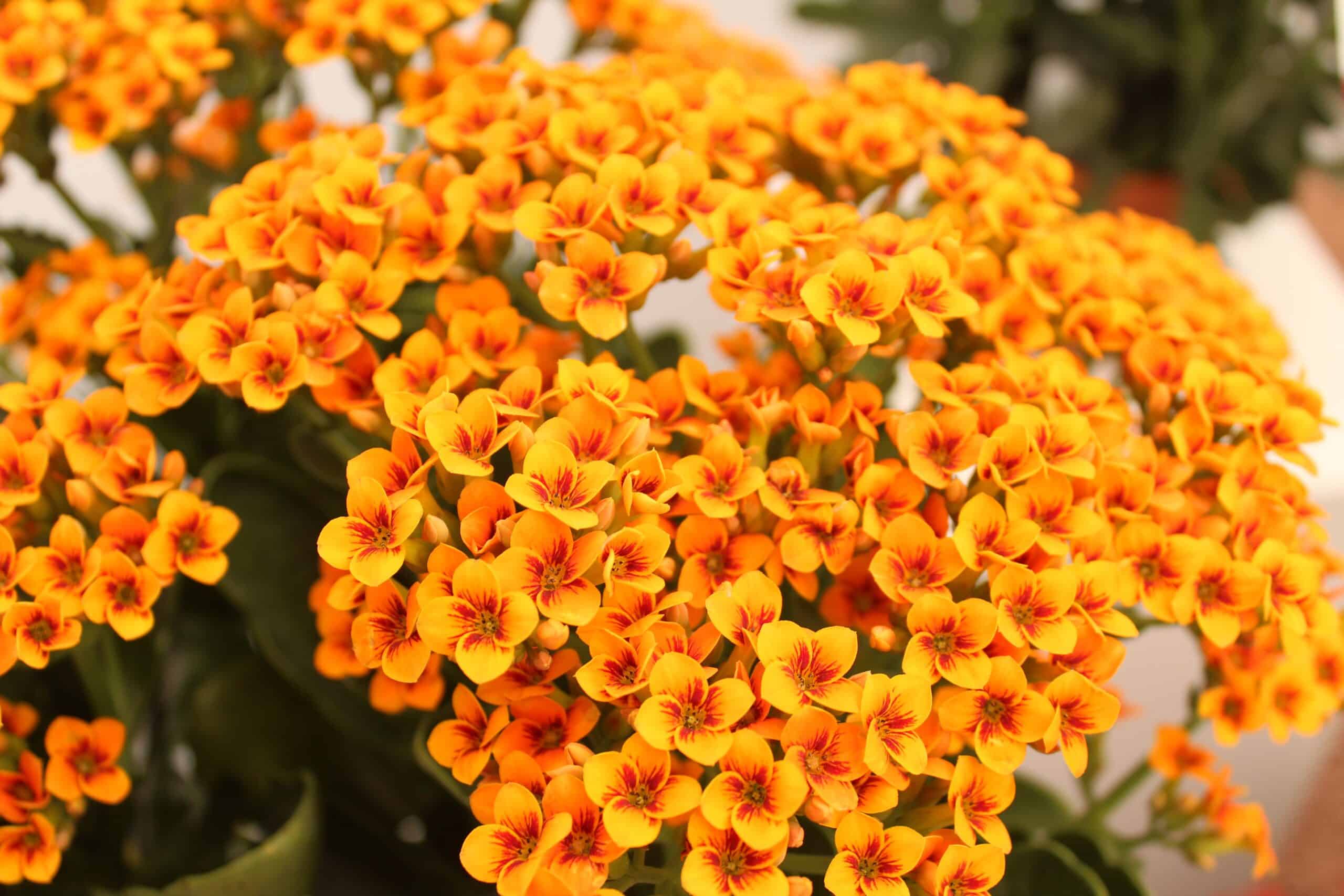Madeiran Squill, also known as Scilla madeirensis, belongs to the BALSAMINACEAE family. It is a rare bulbous perennial native to the island of Madeira. In late fall to early winter, the Squill blooms a cone full of amethyst blooms. These blooms are comprised of tiny flowers that are topped with yellow dots, making them appear similar in size to an Amaryllis.
The foliage of the Madeiran Squill is lush and fleshy; its beauty adds a stunning upgrade to any home or garden. This flower can be picky when it comes to its growing requirements, however, so it’s important to pay attention to the details of its preferred growing conditions.
How to Plant and Grow
Light: The Scilla madeirensis thrives in full sun to partial shade. It blooms best in full sun.
Soil: The Madeiran Squill does best in well-draining, fertile soil that has been amended with some organic matter. Make sure it is well aerated and free of any water logging.
Water: In the summer, keep the soil evenly moist, but not soggy. In the winter, keep the soil just barely moist. Watering frequency will depend on your location and the weather conditions.
Temperature: The Madeiran Squill prefers temperatures of 50-60 degrees F in the winter months. If temperatures drops below 30 degrees F, cover the soil around the plant with a thick layer of mulch.
Humidity: The Madeiran Squill prefers humid conditions, so it’s best to place the plant in an area with high humidity.
Fertilizer: Feed the plant with a balanced 10-10-10 fertilizer every two months during the growing season.
Meaning and Symbolism
The name ‘Madeiran Squill’ can be used to describe the beauty and colour of the flower; it is also a reference to the island of Madeira, where it is native. The Scilla madeirensis is an ancient symbol of hope and promises. The tiny bell-like blooms are known to bring luck and good fortune to the person or home they are placed in.
The common name “Wild Balsam” is derived from the Latin family name for the species, BALSAMINACEAE. It is believed that the juice from this family of flowers was once used as a medicine for many ailments.
History and Religious Significance
The Madeiran Squill has a long history as both a beautiful plant to admire and a valuable source of medicine. It has been used by various cultures throughout history to treat various conditions. In ancient Indian culture, for example, it was believed to have the power to protect against evil and provide courage to those who took it.
In Christianity, it is said that the Madeiran Squill bloomed when Jesus was crucified, a sign of eternal existence. The flowers have also been associated with Easter in some Christian cultures.
Flower Varieties
The Madeiran Squill comes in many varieties with different colours and blooms. The most common varieties are white, deep violet, lavender, and pink. The petals are usually bell-shaped or tubular and the plant can reach heights of up to 40 cm.
The white variety is known for having delicate white flowers with yellow centres, while the deep violet variety has deep-purple petals with creamy yellow centres. The lavender variety has pale-pink petals with white centres, and the pink variety has light-pink petals with yellow centres.
How to Pot and Repot
When the Scilla madeirensis is young, it should be potted in a pot two to three inches larger than the bulb. Fill the pot with well-draining soil, such as a combination of potting soil, peat moss, and sand. Place the bulb in the pot and cover it with soil. Water it thoroughly and then let it sit until the surface of the soil is dry. Check it every few days to make sure it’s not dry.
When the Squill outgrows its pot, it’s time to repot it. Use a pot that is three inches larger than the bulb. Use the same type of soil as when planting and repot it in the same way. Make sure to keep your potting soil well-aerated and free of any water logging.
How to Prune
To ensure that the Scilla madeirensis stays healthy and blooms for many years, it is important to prune it regularly. Pruning is done in the spring and should be done with sharp pruning shears. Start by trimming off any dead or dying foliage and then shape the plant by trimming away any stems that are not growing in the desired direction. It is important to deadhead any spent flowers to prevent them from going to seed.
It is also important to trim away any foliage that is growing underneath the low-hanging flowers. This will help ensure that the lower parts of the plant get enough sun and air circulation. Pruning should be done with care, as it is easy to damage the plant if done aggressively.
How to Propagate
The Madeiran Squill can be propagated through bulb offsets, by dividing the bulbs in the spring or early summer. The offsets should be planted in a pot filled with well-draining soil. Cover the offset with soil and water it thoroughly. Bulb offsets tend to take longer to bloom than the parent bulbs, so be patient and enjoy the process.
Common Pests and Diseases
There are a variety of pests and diseases that can affect the Madeiran Squill. Common pests include aphids, slugs, and snails, while common diseases include blight, powdery mildew, and rust. To help prevent pests and diseases, make sure the soil is well-draining, the foliage is kept dry, and the plant is in a sunny spot.
Frequently Asked Questions
How long does it take for the Madeiran Squill to bloom? It typically takes about 8-10 weeks for the flowers to form and bloom after planting the bulb.
How deep should be planted? The depth of the bulb should be about three times its diameter.
Do I need to re-pot the Madeiran Squill? Yes, it is necessary to re-pot the flower if the pot starts to become too small. The plant will outgrow its pot if the roots are contained in it for too long.
Table Fact Sheet
| Madeiran Squill | Scilla madeirensis |
| Family | BALSAMINACEAE |
| Plant Type | Perennial |
| Mature Size | Up to 40 cm |
| Sun Exposure | Full sun to partial shade |
| Soil Type | Well-draining, fertile soil |
| Soil pH | 7.0-8.5 |
| Bloom Time | Late fall to early winter |
| Flower Color | White, deep violet, lavender, pink |
| Hardiness Zones | 7-9 |
| Native Area | Madeira |
Sources
Pfister, R. (n.d.). MadeiranSquill – Scilla madeirensis. Retrieved from https://www.thegardenhelper.com/madeiran_squill.html
Hall, Marjorie. (n.d.). MadeiranSquill – Scilla madeirensis. Retrieved from https://www.plantcaretoday.com/madeiran-squill-scilla-madeirensis.html
What we love from Amazon this week
Buy these wonderful flowers directly from Amazon:















